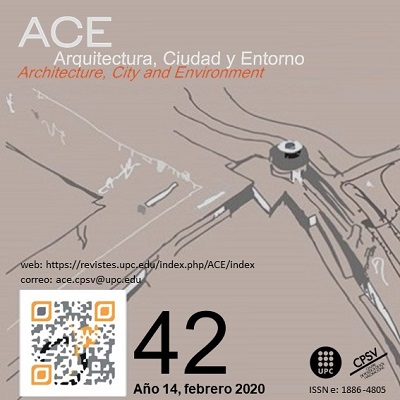Emerging Factors Shaping Identity of Indigenous Urbanism Concurrently Adopting Modernity in Qatar: The Application of Diffusion Theory
DOI:
https://doi.org/10.5821/ace.14.42.8362Keywords:
Indigenous architecture, contemporary design, modern design, urban designAbstract
Forms, designs, and symbols are the components of built environment, which transfer the information of place and identity to users. This research aimed to explore the emerging factors shaping the identity of local urban districts while adopting the global culture and modernity. To achieve this aim, the research has conducted two phases within which include a few steps. Phase one was to explore different urban zoning. It includes a detailed analysis of the different architectural styles and elements that have spread the identity concerning the main constituents of urban zones. Because of the difficulty to survey the whole Doha region, this research has focused on four mega projects with different characteristics in Doha Governorates; Pearl Qatar (representing Islamic architecture), Souq Waqif (representing traditional architecture), Msheireb project (as the combination of traditional and modern architecture), and West Bay (as the reference for global approach). Phase one has two steps; Field Observation and Field survey. Phase two was to explore the new elements spread for built environment’s identity with the concentration on the selected sites in Doha. Phase two has two steps; Photo survey and Interviews. To test the proposed premise, this phase prolonged into human geography using Torsten Hagerstrand’s diffusion theory. The findings of this research help architects and urban designers to enhance susers’ awareness of their natural environment, and provide a better perception of identity in local urban districts and vernacular architecture, based on instinct and strategic view derived from the global culture and societal modern architecture principles.
Published
Issue
Section
License
| INTELECTUAL PROTECTION CRITERIA |
At this moment, it is count with the "Oficina Española de Patentes y Marcas", while global protection it is being processed by the World Intelectual Property Organization (OMPI/WIPO). Nevertheless the International Standard Serial Number Office (ISSN) has given the following numbers ISSN: 1886-4805 (electronic version) and 1887-7052 (paper version). All articles will be peer reviewed, using double blind reviewing. |
| COPYRIGHT |
The article contents and their comments are authors exclusive liability, and do not reflect necessarily the journal editor commitee's opinion. All ACE published works are subject to the following licence CC BY-NC-ND 3.0 ES http://creativecommons.org/licenses/by-nc-nd/3.0/es/ It implies that authors do not hold nor retain the copyright without restrictions but only those included in the licence. |


































